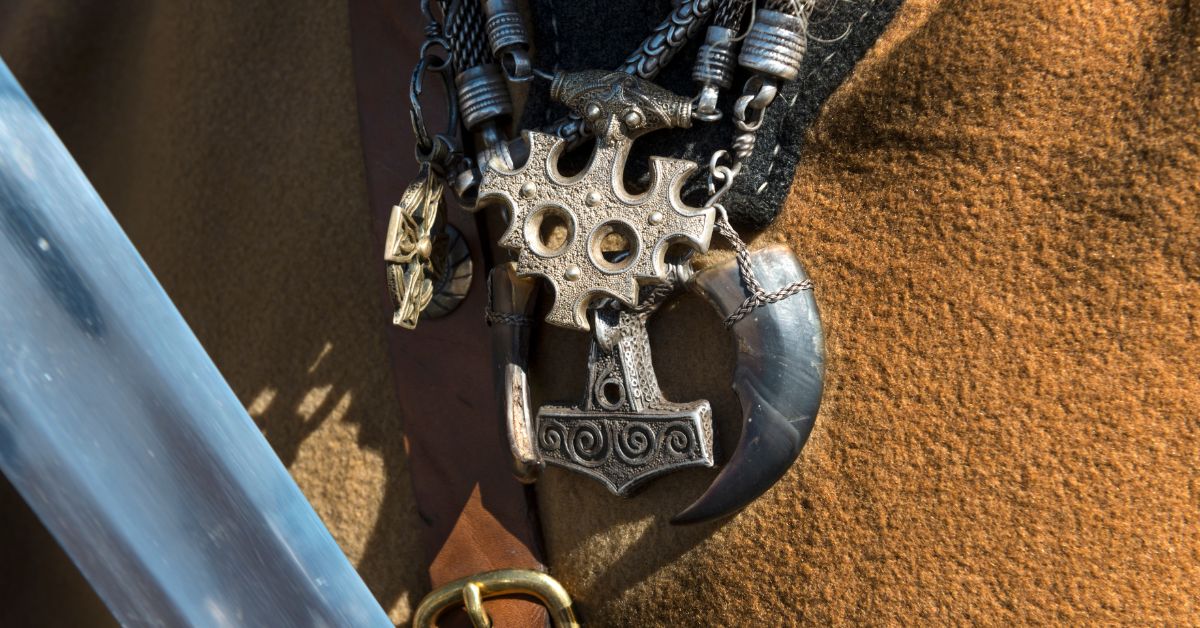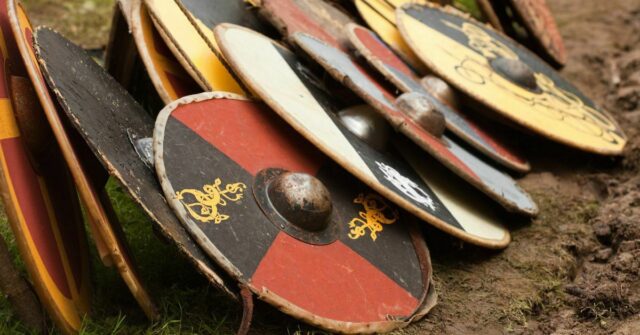The allure of Viking culture lies not only in their famed seafaring and warrior skills but also in their intricate jewelry and personal adornment practices.
Delving into the significance of these artifacts reveals a complex society with rich traditions and artistic expression.
This exploration provides fascinating insights into the Viking way of life, their values, and their connections with the wider medieval world.
Introduction to Viking Culture and Aesthetics
Viking culture is renowned for its unique blend of functionality and artistry. Jewelry was not merely decorative; it served as a social signifier, currency, and even a protective talisman.
Understanding Viking personal adornment opens a window into their daily lives and societal structures, offering clues to their communal and spiritual beliefs.
The Role of Personal Adornment in Viking Society
In Viking society, personal adornment went beyond mere decoration. It was a form of language, an indicator of status, and a means to display wealth and alliances.
Jewelry pieces, often intricately decorated and imbued with symbolism, communicated much about the wearer’s social position and personal history.
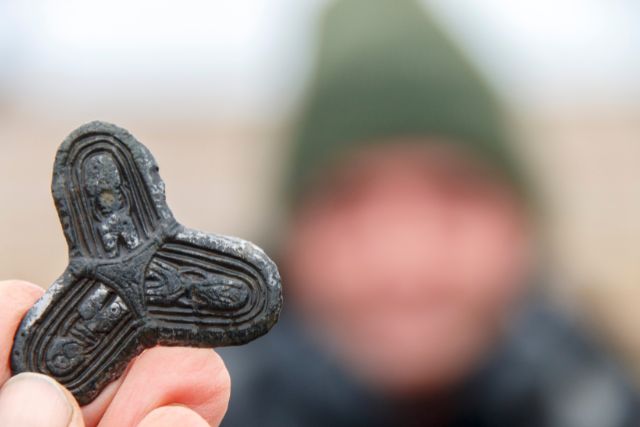
Understanding Viking Social Hierarchy Through Jewelry
Jewelry served as a tangible representation of the Viking social hierarchy. The quality, material, and quantity of personal adornment distinguished the elite from the common folk.
Leaders and warriors displayed more elaborate and finely crafted pieces, signifying their rank and valor.
Materials and Craftsmanship
The Vikings were master craftsmen, and their jewelry-making skills were a testament to their craftsmanship.
Utilizing a variety of materials from raided lands, they created durable and intricate pieces that have withstood the test of time, providing us with a glimpse into their material culture.
Common Materials Used in Viking Jewelry
Viking jewelers employed a range of materials, including precious metals like silver and gold, as well as bronze, iron, and even bone and amber.
The choice of material often depended on the wearer’s wealth and the intended use of the item.
Techniques and Innovations in Viking Metalwork
The Viking Age witnessed significant innovations in metalwork techniques.
Artisans employed methods such as filigree, in which fine wires were twisted into intricate patterns, and granulation, where tiny beads of metal were fused onto a surface to create textured designs.
Types of Jewelry and Adornment
Vikings adorned themselves with a variety of jewelry types, each serving different functions and symbolizing various aspects of their culture.
From practical brooches that held clothing together to ornamental rings that displayed wealth, each piece tells a story of Viking life.
Rings, Bracelets, and Arm Bands
Rings and bracelets were not only decorative but also often used as currency, chopped up, and traded by weight.
Armbands, sometimes known as arm rings, were particularly associated with oaths and allegiance, often given by lords to their warriors.
Necklaces and Amulets: Symbols of Protection and Power
Necklaces, often featuring pendants like Thor’s hammer or Odin’s spear, were worn for protection and to express devotion to the Norse gods.
Amulets, believed to hold magical properties, were also commonly worn for luck in battle or fertility.
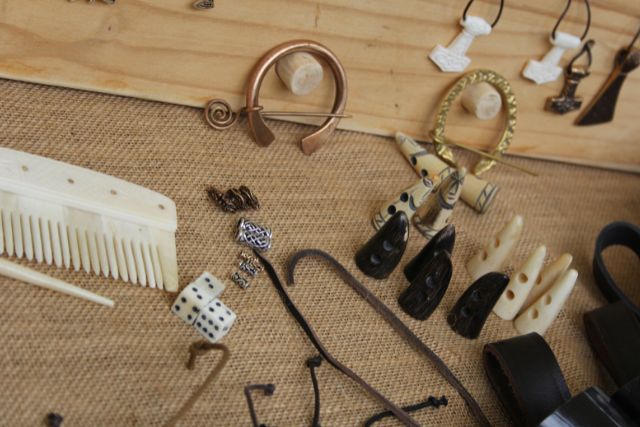
Brooches and Pins: More Than Just Fashion
Brooches were essential in Viking wardrobe, serving to fasten cloaks and tunics. Their designs could be simple for everyday use or highly decorative, indicating higher social status.
Pins, while less common, were similarly used and often displayed exquisite craftsmanship.
Earrings and Hair Accessories: A Rare Glimpse
Earrings were less common in Viking culture, but when found, they reflect high craftsmanship.
Hair accessories, including intricate combs and pins, were used by both men and women to manage their hair and to display their finesse and wealth.
Cultural and Religious Significance
Jewelry in Viking times was deeply intertwined with cultural and religious beliefs.
It served as a means to express fidelity to the Norse gods and to exhibit one’s beliefs and superstitions through symbols and inscriptions.
Runic Inscriptions: Messages to the Gods
Runic inscriptions on jewelry were not merely decorative; they were often magical formulas, prayers, or marks of ownership.
These inscriptions provide a direct link to the Viking language and thoughts, offering invaluable insights into their culture.
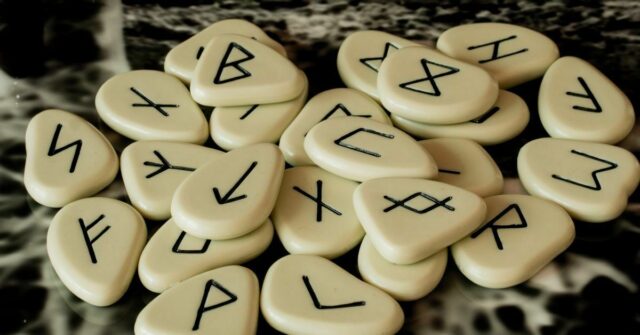
Symbols of Faith: Thor’s Hammer and Other Icons
Symbols like Thor’s hammer, the Valknut, and the Vegvisir were commonly found on Viking jewelry, each holding significant religious meaning and believed to offer protection or guidance from the gods themselves.
Jewelry in Viking Burials and What They Tell Us
The presence of jewelry in Viking burials was a testament to its importance in Viking life and beyond.
The types and quantity of jewelry found in graves help archaeologists understand the social status and perhaps even the profession of the deceased.
Gender and Jewelry: Men and Women’s Adornments
The Vikings had distinct differences in jewelry for men and women, reflecting their societal roles and personal status.
These differences were not only in the types of jewelry worn but also in the symbolism and functionality of these adornments.
Adornment in the Male Viking Wardrobe
Men in Viking society typically wore rings, arm bands, and cloak pins. These items were not just decorative but also indicative of a man’s status and achievements.
Leaders and warriors would often receive rings from their chieftains as tokens of honor and loyalty.
Women’s Jewelry: Status and Identity
Viking women’s jewelry was both ornamental and utilitarian.
Brooches, in particular, were essential for fastening their garments but also served as a display of a woman’s marital status, wealth, and family ties.
Beaded necklaces and various fibulae were also popular among women.
Evolution of Viking Jewelry Over Time
Over the centuries, Viking jewelry evolved, reflecting changes in societal structures, fashion, and external influences.
This evolution provides a fascinating insight into the adaptability and interactions of the Viking people with other cultures.
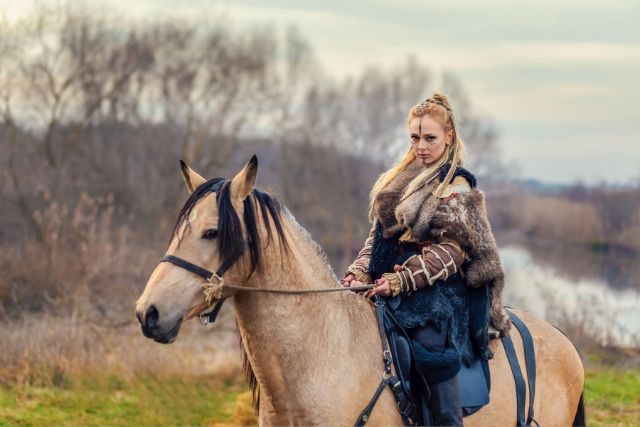
Influences and Changes During the Viking Age
The Viking Age saw a significant interchange of cultures, particularly through trade and conquest.
These interactions brought new designs, motifs, and techniques to Viking jewelry, leading to an evolution in styles and the incorporation of foreign elements.
From Function to Fashion: The Transition of Viking Jewelry Styles
As the Viking Age progressed, the function of jewelry as a status symbol became more pronounced.
The transition from simple designs to more elaborate ornamentation reflects a shift towards a more hierarchical and affluent society, with jewelry as a clear marker of social standing.
Jewelry Making Techniques
Viking jewelry-making techniques were complex and varied, ranging from simple wirework to sophisticated casting methods.
Understanding these techniques helps us appreciate the skill and artistry of Viking craftspeople.
The Art of Filigree and Granulation
Filigree, involving twisted wires, and granulation, the use of tiny metal balls to create patterns, were two techniques that Vikings mastered to create intricate and delicate jewelry designs, often reserved for the most high-status individuals.
Lost-Wax Casting and Its Importance
The lost-wax casting method was revolutionary, allowing for the creation of complex shapes and designs.
This technique involved carving a design in wax, encasing it in clay, and then melting the wax out to leave a mold for molten metal, resulting in detailed and high-quality pieces.
The Impact of Trade and Interaction With Other Cultures
Viking jewelry often reflects the extensive trade networks and cultural exchanges of the Viking Age.
These interactions had a profound impact on the styles, materials, and techniques used in Viking jewelry making.
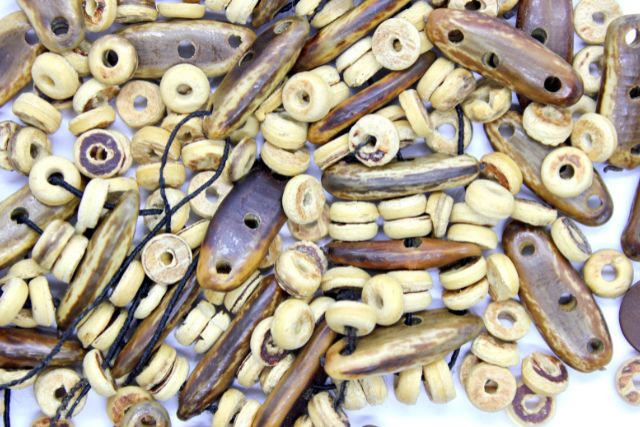
Foreign Influences on Viking Jewelry Design
Exchanges with the British Isles, the Frankish Empire, and the Byzantine Empire introduced new artistic influences, as evidenced by the appearance of Christian symbols in Viking jewelry and the adoption of new styles and motifs.
Trade Routes and the Spread of Viking Adornment Styles
Viking traders traveled widely, reaching as far as the Middle East and Eastern Europe.
This vast network facilitated the spread of Viking adornment styles, as well as the importation of exotic materials and design ideas that were then incorporated into Viking craftsmanship.
Recreating Viking Jewelry Today
Modern recreations of Viking jewelry allow us to connect with the past in a tangible way.
Craftsmen today use both ancient and modern techniques to recreate the styles and motifs that once adorned Viking warriors and settlers.
Modern Reproductions and Their Authenticity
While modern reproductions of Viking jewelry are widely available, authenticity in materials and craftsmanship varies.
Some artisans strive to use traditional materials and methods to create pieces as close to the originals as possible.
The Role of Reenactment and Historical Societies
Reenactment groups and historical societies play a significant role in keeping the Viking craft alive.
By creating and wearing replicas of Viking jewelry, they help to educate the public and keep the history and culture of the Viking Age accessible to all.
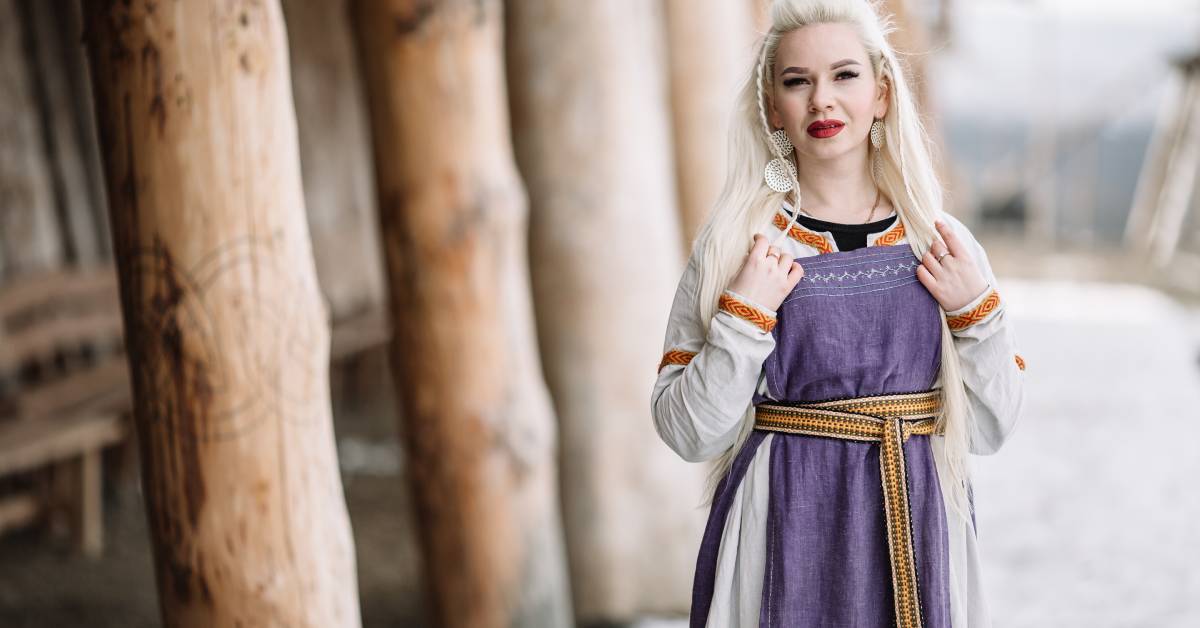
Conclusion: The Lasting Legacy of Viking Jewelry
The legacy of Viking jewelry extends far beyond its aesthetic appeal; it represents a connection to a distant past, a source of cultural pride, and a symbol of enduring craftsmanship.
Its influence is still seen in modern jewelry designs, and its allure remains as strong as ever for both historians and enthusiasts alike.
Understanding Our Fascination With Viking Culture
Our fascination with Viking culture is multifaceted, stemming from their reputation as fierce warriors, skilled navigators, and complex society.
Jewelry remains one of the most captivating aspects, providing a tangible link to the Viking ethos and lifestyle.
The Influence of Viking Aesthetics on Modern Jewelry
The influence of Viking aesthetics on contemporary jewelry is unmistakable.
Designers draw inspiration from Viking motifs and symbolism, blending ancient styles with modern tastes to create pieces that resonate with the bold spirit and artistry of the Viking Age.

